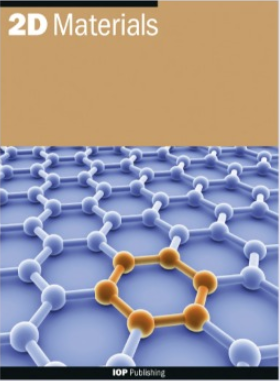用于电化学监测乳腺癌细胞释放的细胞外一氧化氮的溶液加工石墨烯薄膜
IF 4.5
3区 材料科学
Q2 MATERIALS SCIENCE, MULTIDISCIPLINARY
引用次数: 0
摘要
一氧化氮在心血管功能、免疫反应和细胞间信号传导中起重要作用。然而,由于其寿命短,实时检测一氧化氮是具有挑战性的。本文采用旋转涂层和热板退火的简易制造方法,开发了一种基于纤维连接蛋白修饰的溶液处理石墨烯墨水的电化学传感器,用于一氧化氮检测。该传感器首先用一氧化氮供体精胺NONOate进行了电化学表征,其动态范围为10 - 1000 μM。光学显微镜证实,纤维连接蛋白功能化的石墨烯支持MDA-MB-231乳腺癌细胞的附着和生长。细胞外一氧化氮的产生是由氨基酸l -精氨酸刺激的。一氧化氮的产生导致粘附细胞的形态变化,这种变化在加入一氧化氮合酶拮抗剂n ω-硝基- l -精氨酸甲酯(L-NAME)后是可逆的。利用纤维连接蛋白功能化石墨烯传感器的实时安培测量也证实了一氧化氮的产生。虽然这项工作的重点是一氧化氮检测,但这个潜在的可扩展平台可以扩展到其他细胞类型,包括治疗药物和生物相容性涂层的高通量评估。本文章由计算机程序翻译,如有差异,请以英文原文为准。
Solution-processed graphene films for electrochemical monitoring of extracellular nitric oxide released by breast cancer cells
Nitric oxide plays an important role in cardiovascular function, immune response, and intercellular signaling. However, due to its short lifetime, real-time detection of nitric oxide is challenging. Herein, an electrochemical sensor based on fibronectin-modified, solution-processed graphene ink for nitric oxide detection is developed using a facile fabrication method involving spin-coating and hot-plate annealing. The sensor is first electrochemically characterized with a nitric oxide donor, spermine NONOate, exhibiting a dynamic range of 10 – 1000 μM. The fibronectin-functionalized graphene supports the attachment and growth of MDA-MB-231 breast cancer cells, as confirmed by optical microscopy. Extracellular nitric oxide production is stimulated using the amino acid L-arginine. Nitric oxide production results in morphological changes to the adhered cells, which are reversible upon the addition of the nitric oxide synthase antagonist Nω-nitro-L-arginine methyl ester (L-NAME). The production of nitric oxide is also confirmed using real-time amperometric measurements with the fibronectin-functionalized graphene sensors. While this work focuses on nitric oxide detection, this potentially scalable platform could be extended to other cell types with envisioned applications including the high-throughput evaluation of therapeutics and biocompatible coatings.
求助全文
通过发布文献求助,成功后即可免费获取论文全文。
去求助
来源期刊

2D Materials
MATERIALS SCIENCE, MULTIDISCIPLINARY-
CiteScore
10.70
自引率
5.50%
发文量
138
审稿时长
1.5 months
期刊介绍:
2D Materials is a multidisciplinary, electronic-only journal devoted to publishing fundamental and applied research of the highest quality and impact covering all aspects of graphene and related two-dimensional materials.
 求助内容:
求助内容: 应助结果提醒方式:
应助结果提醒方式:


